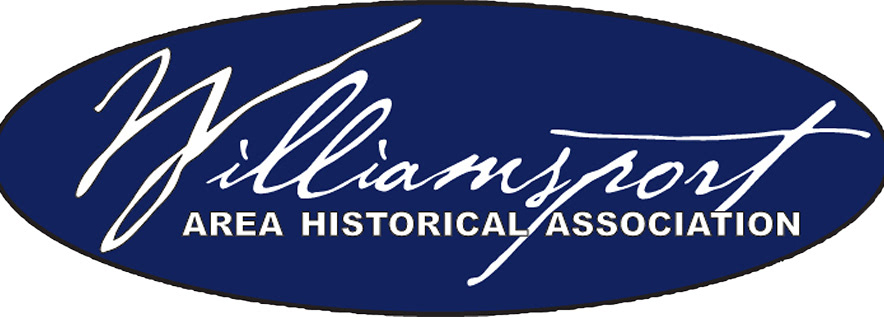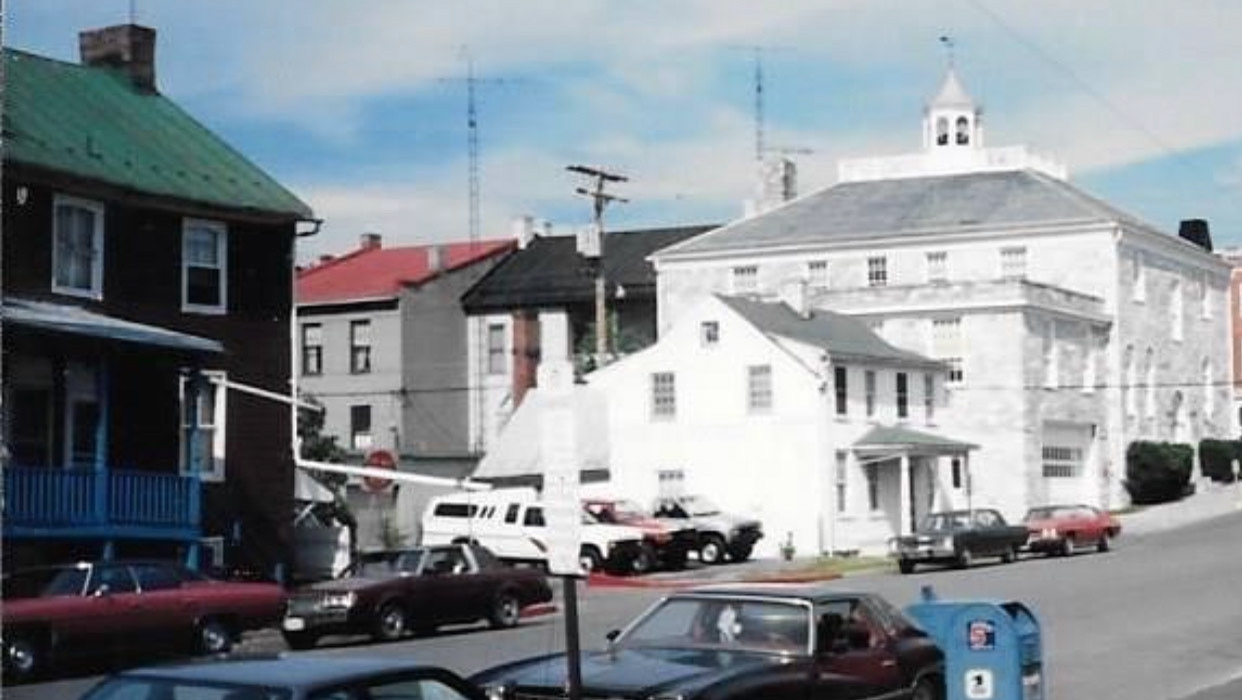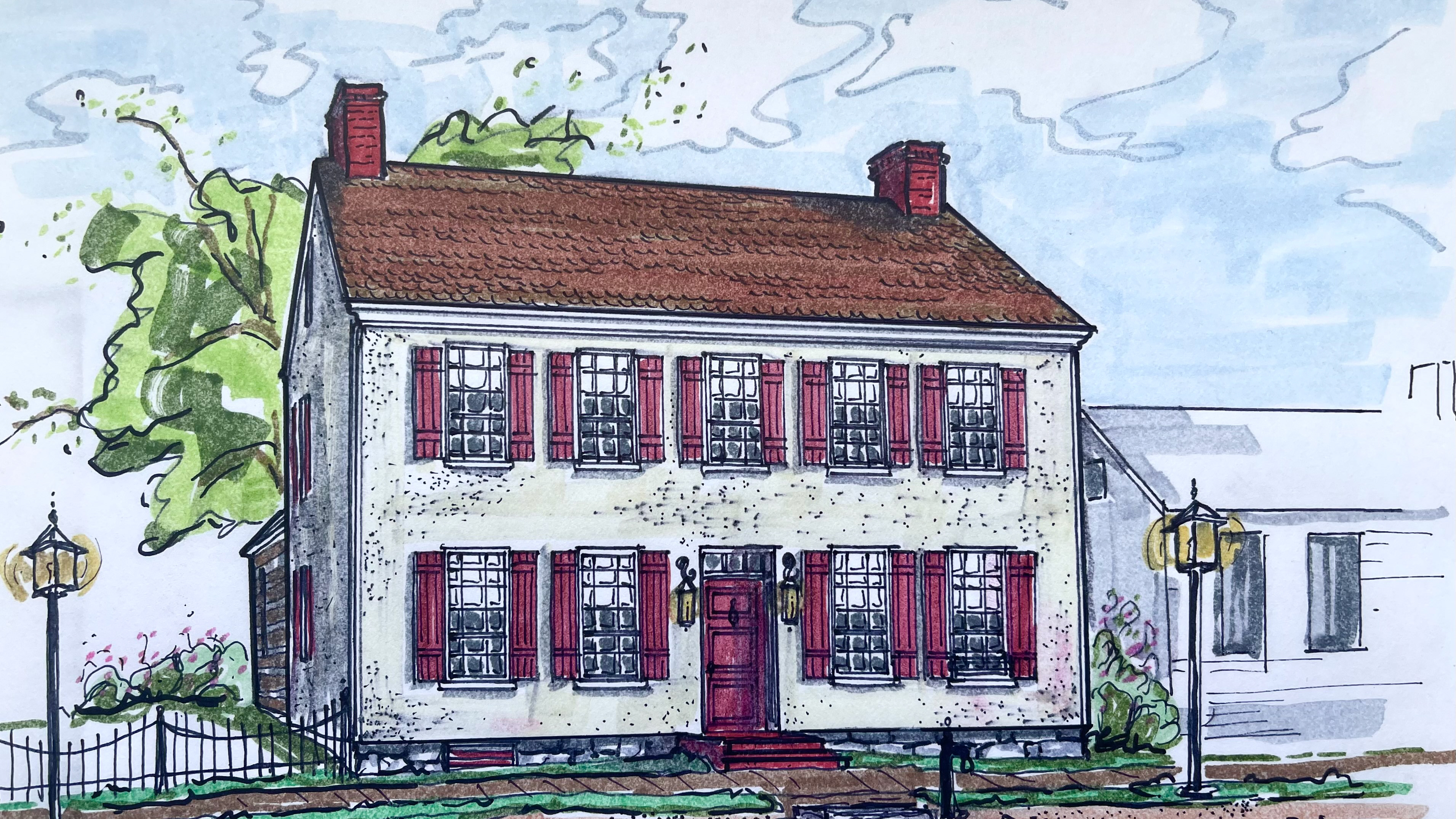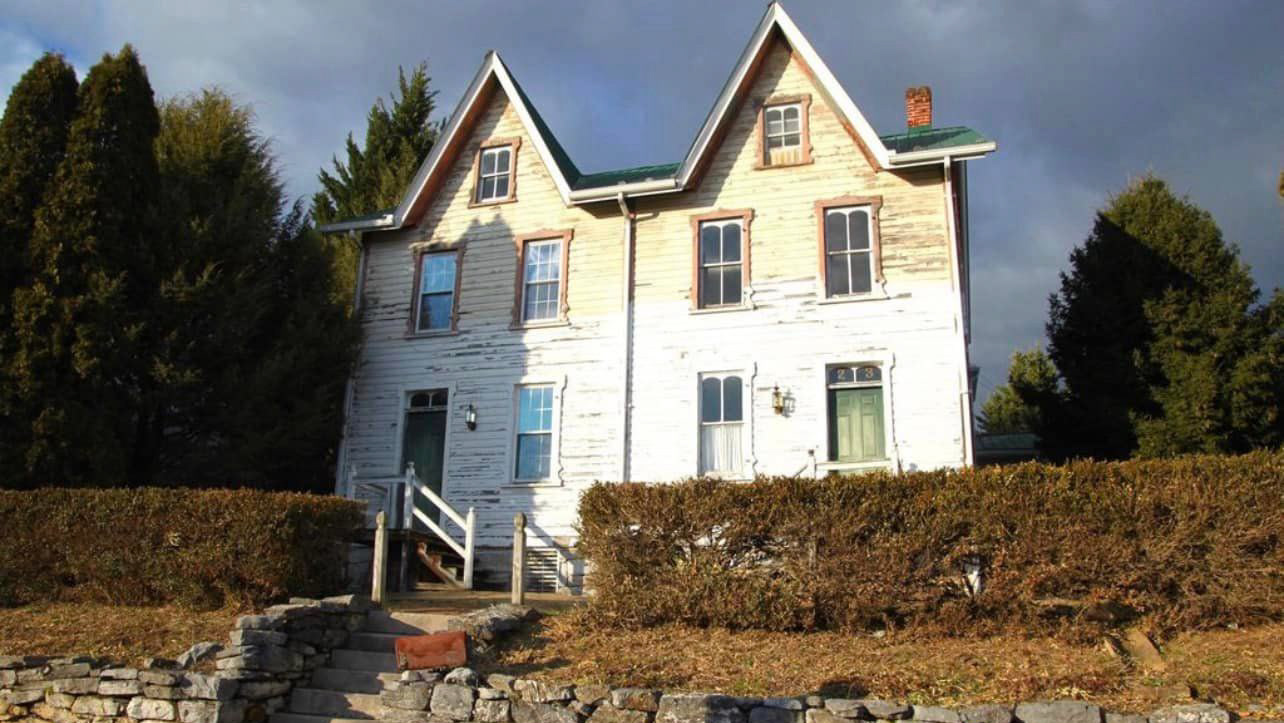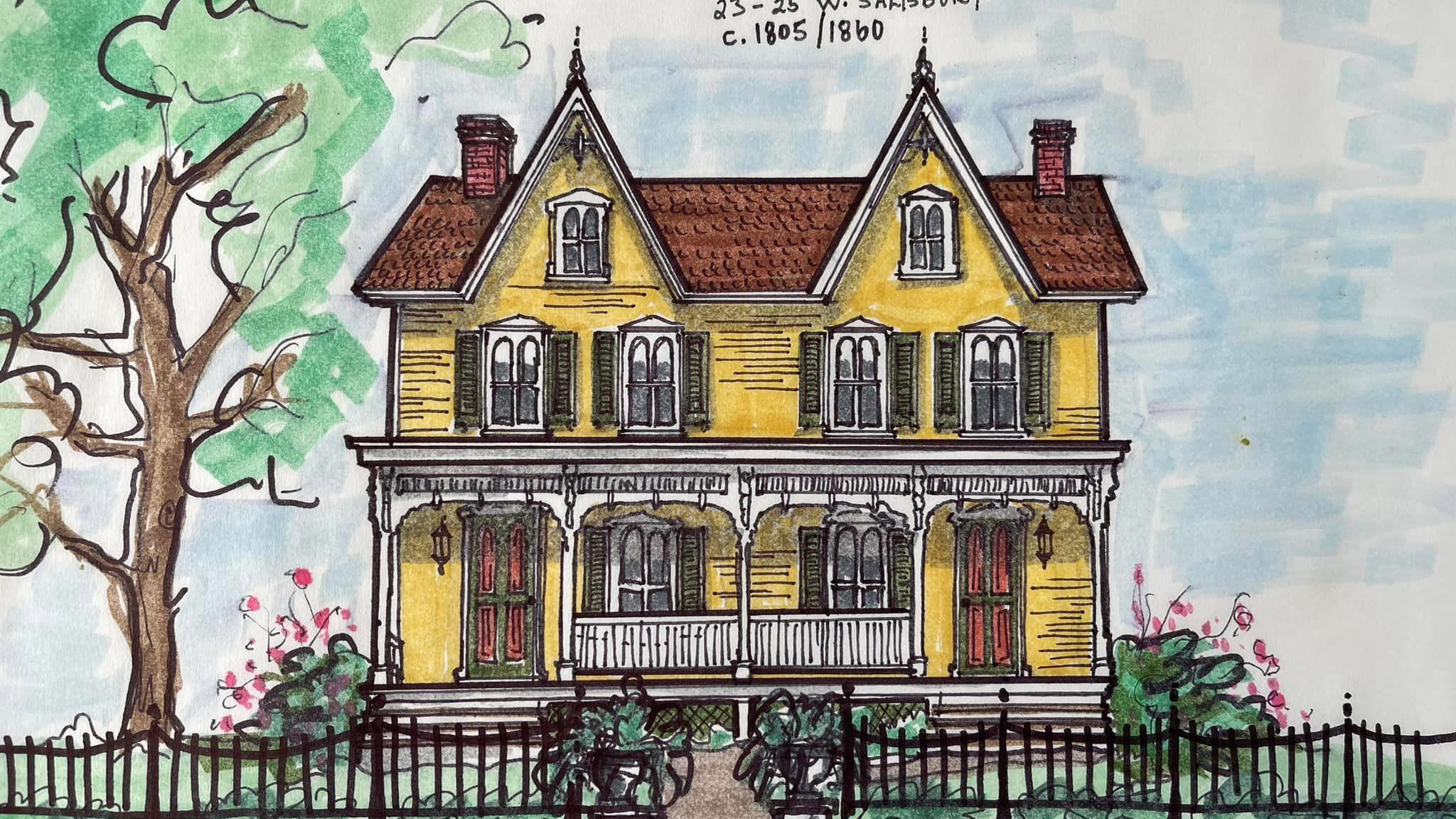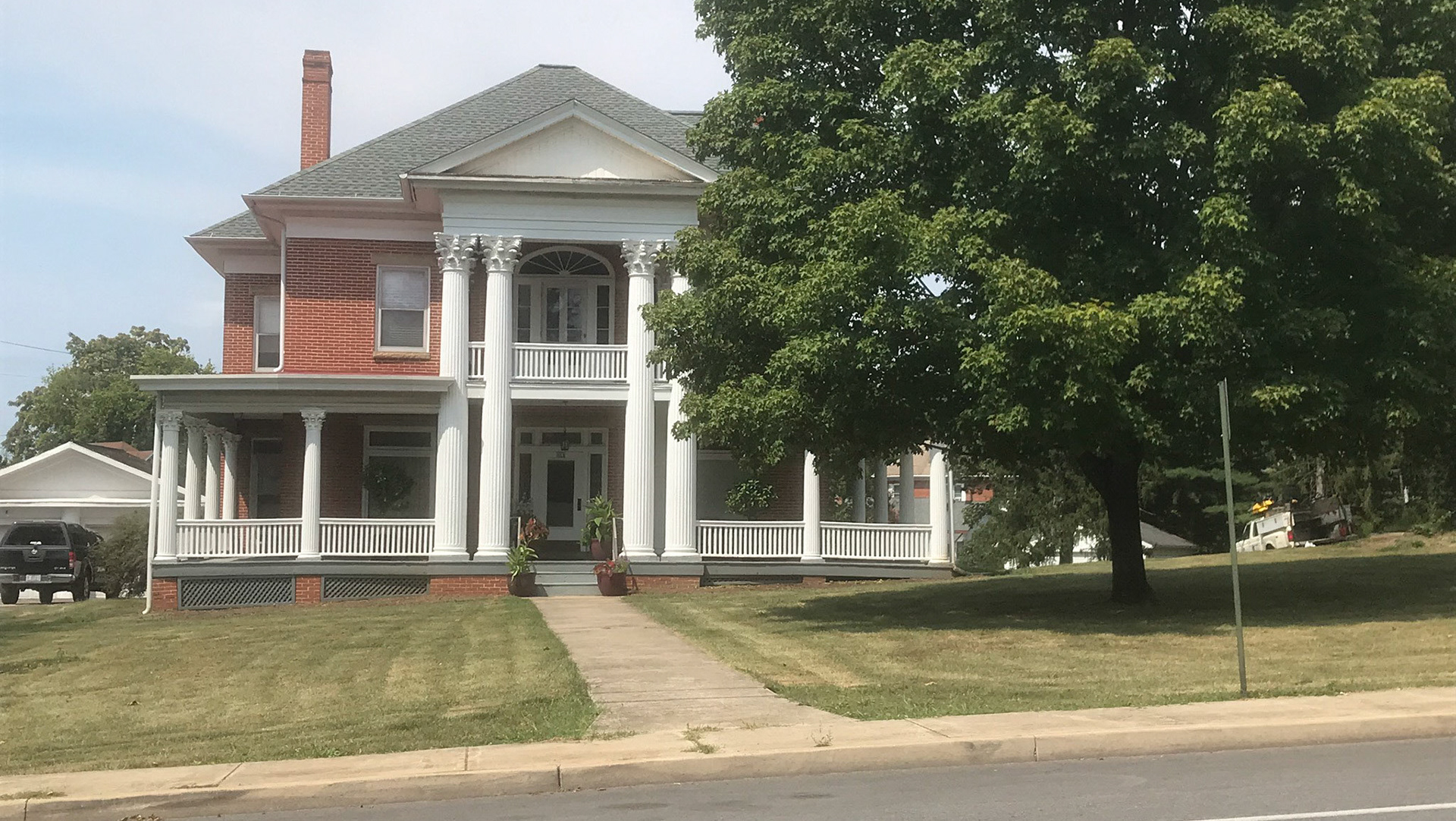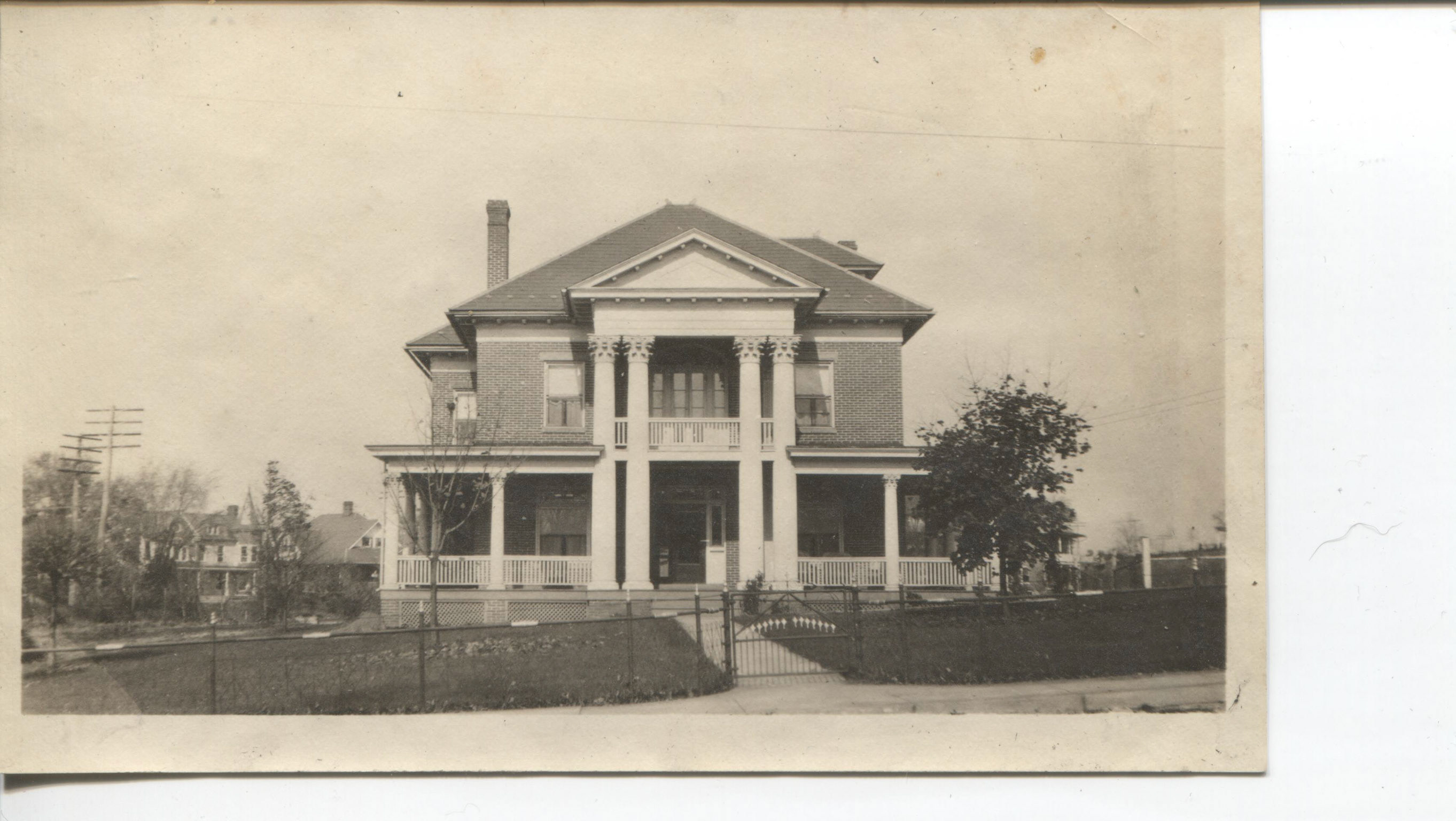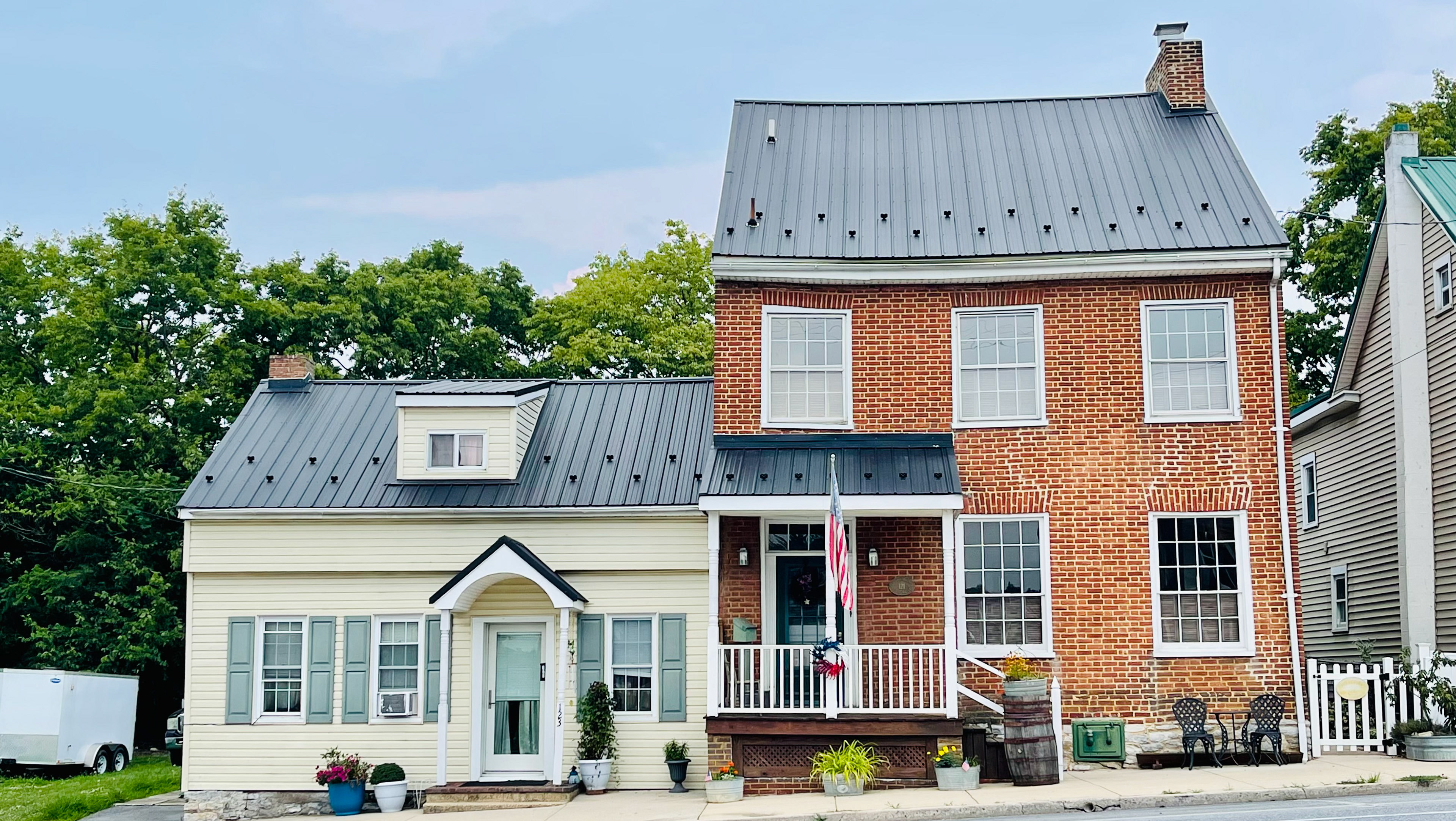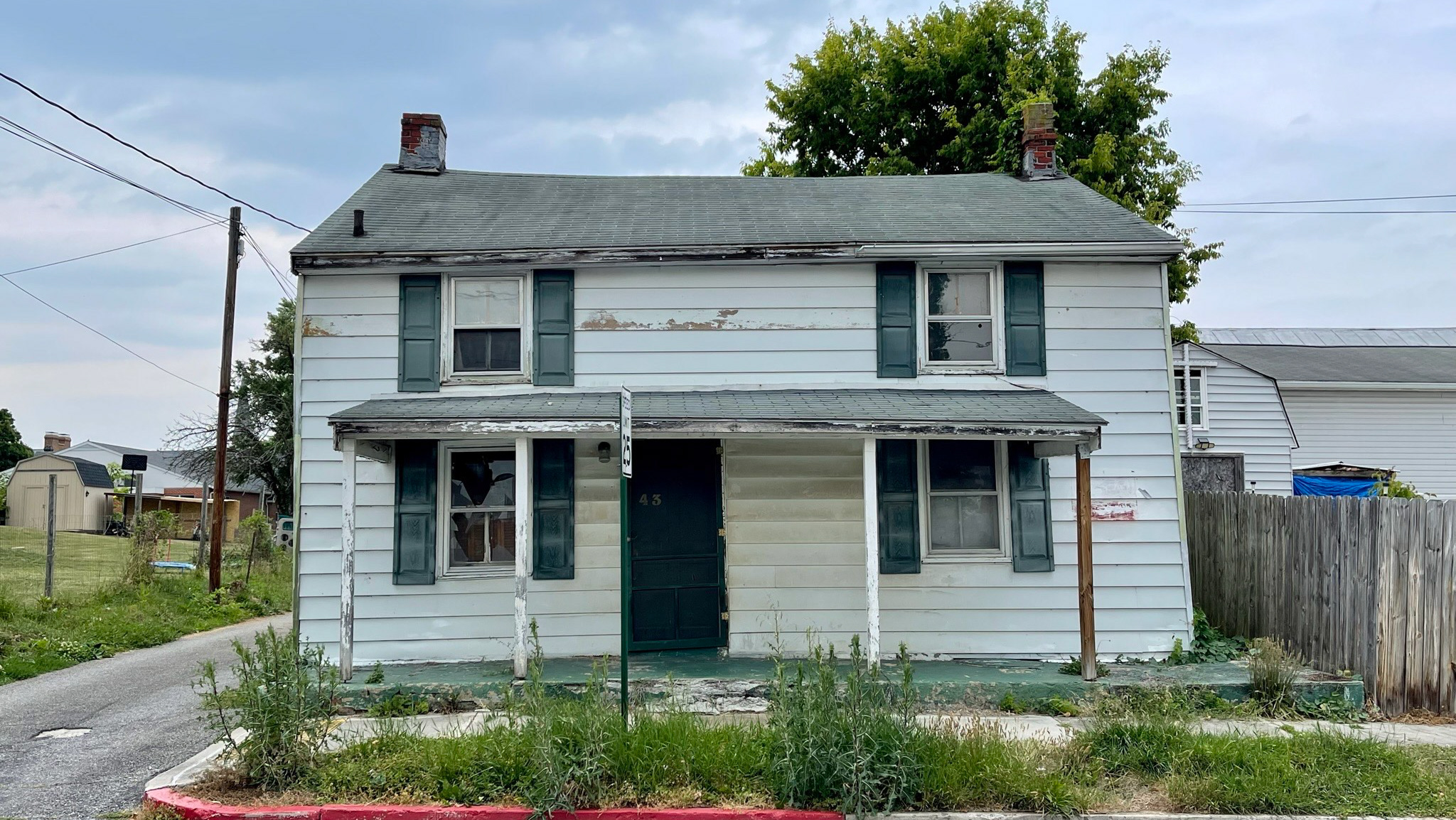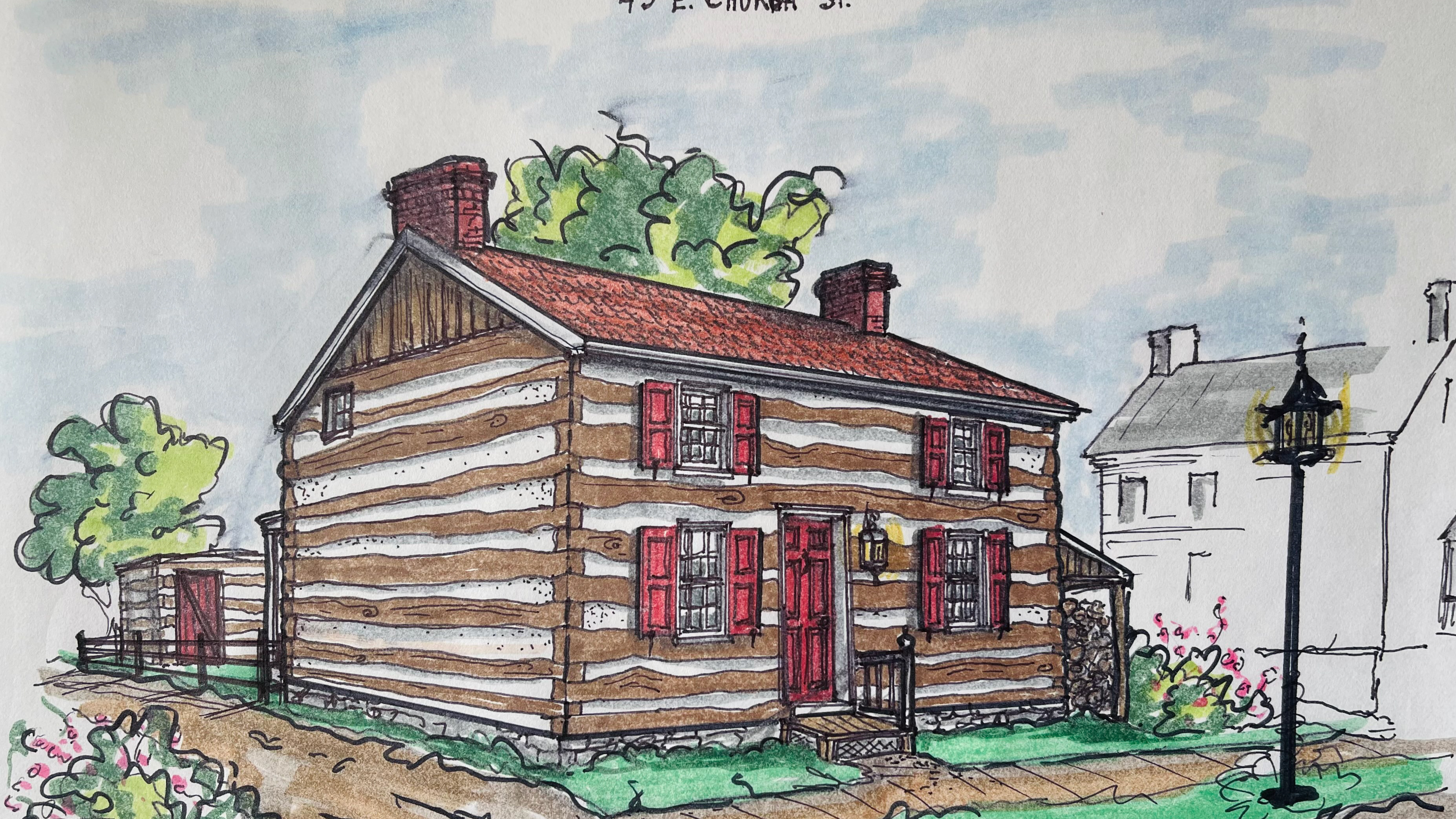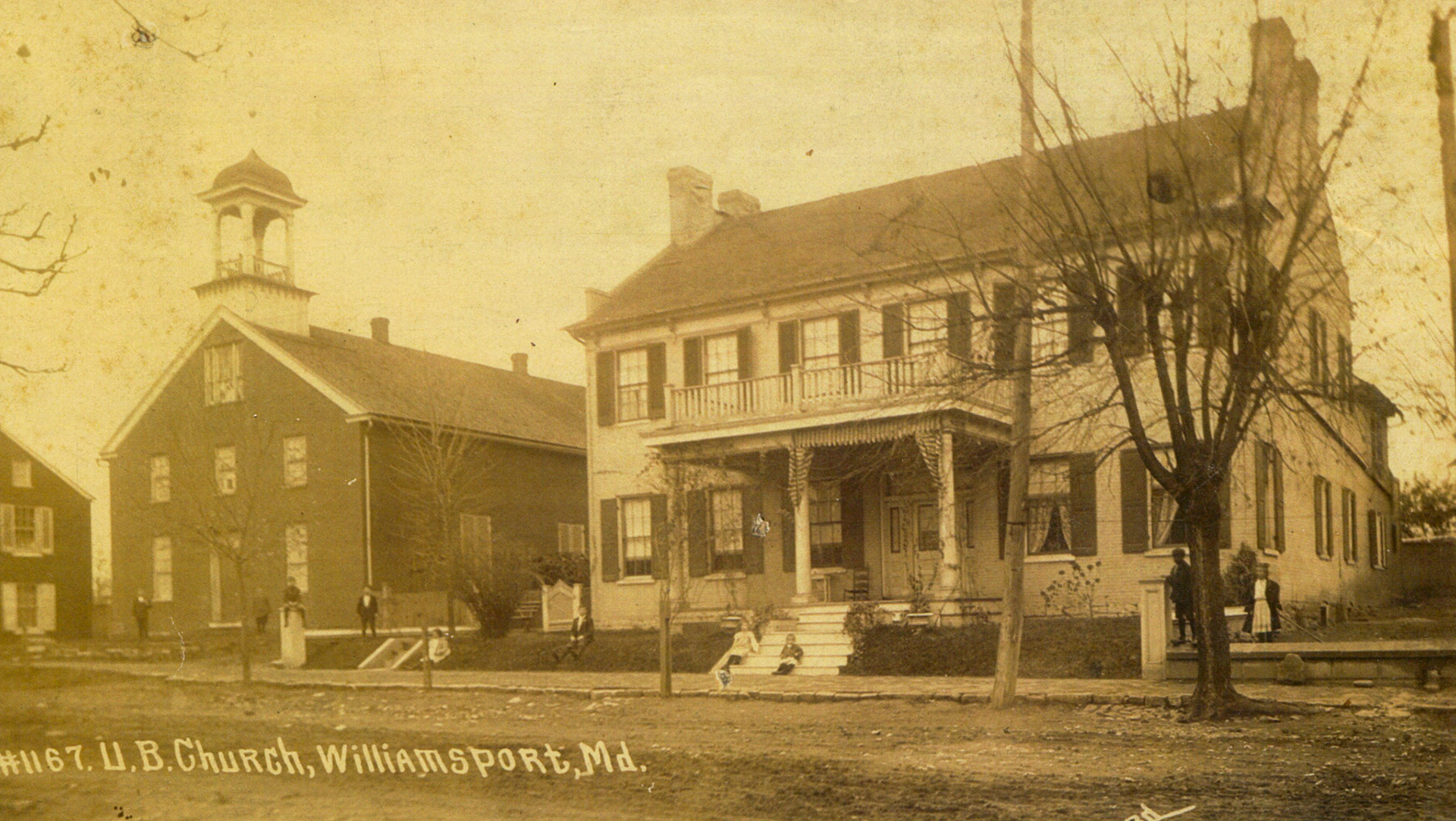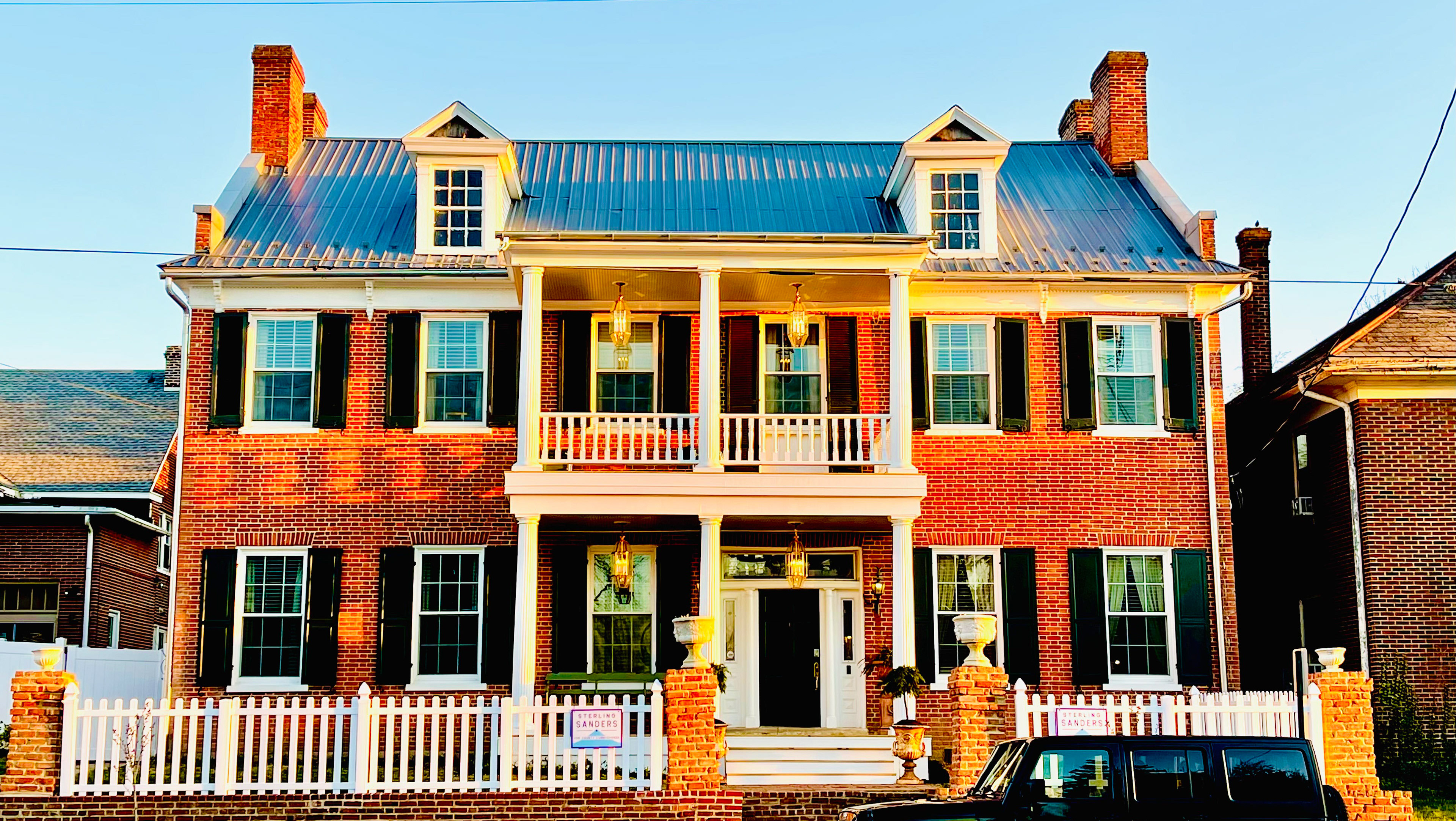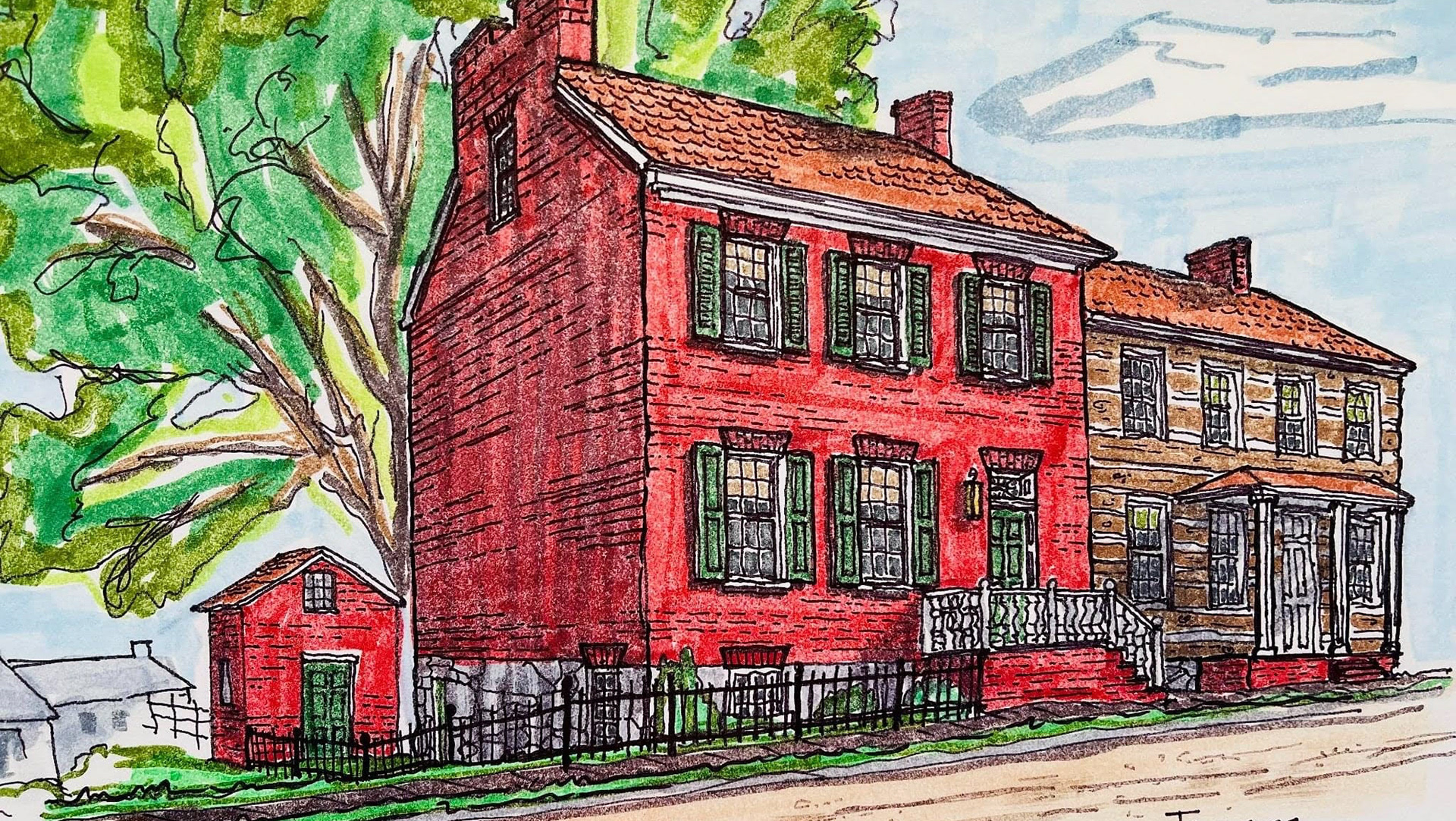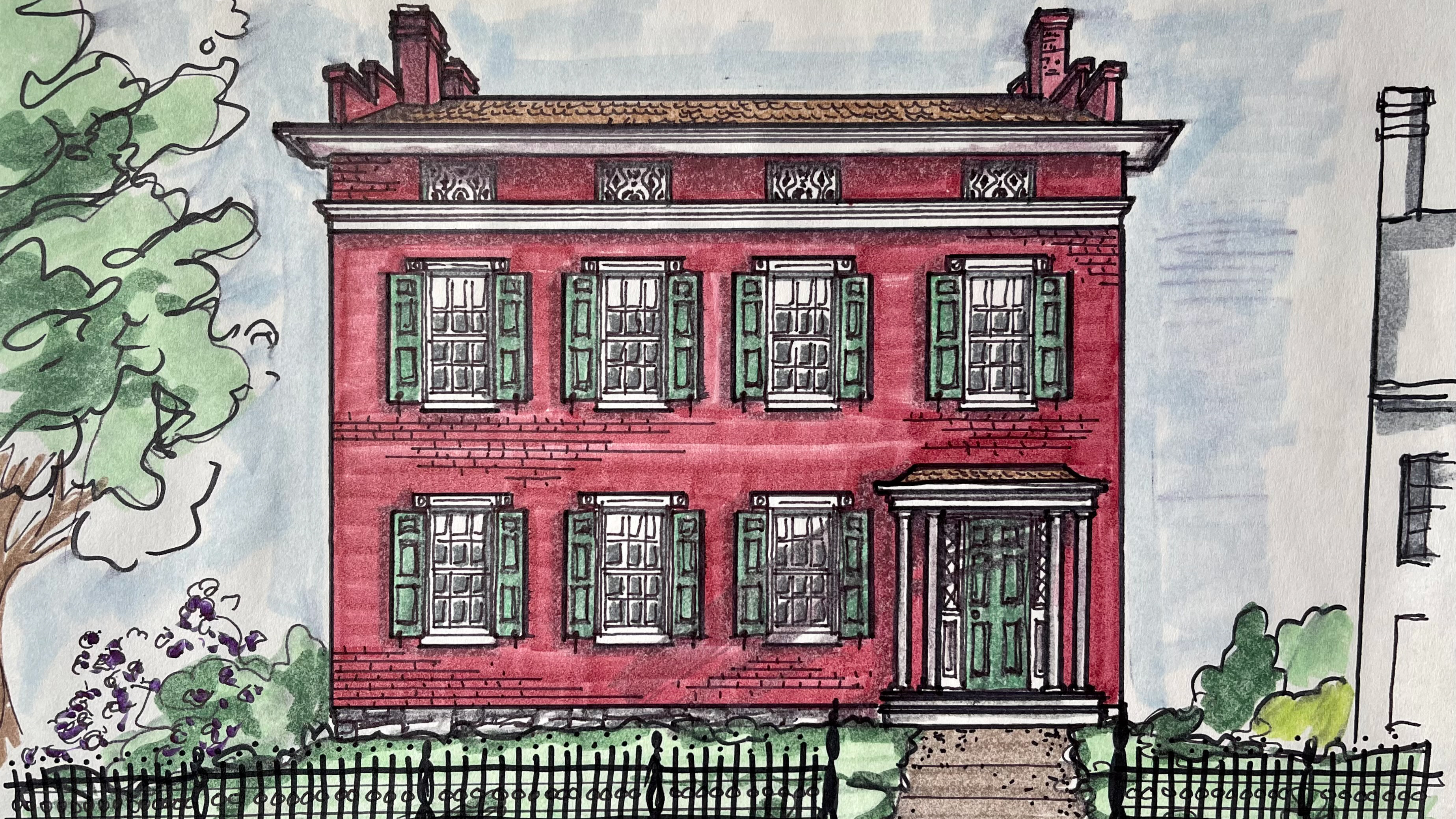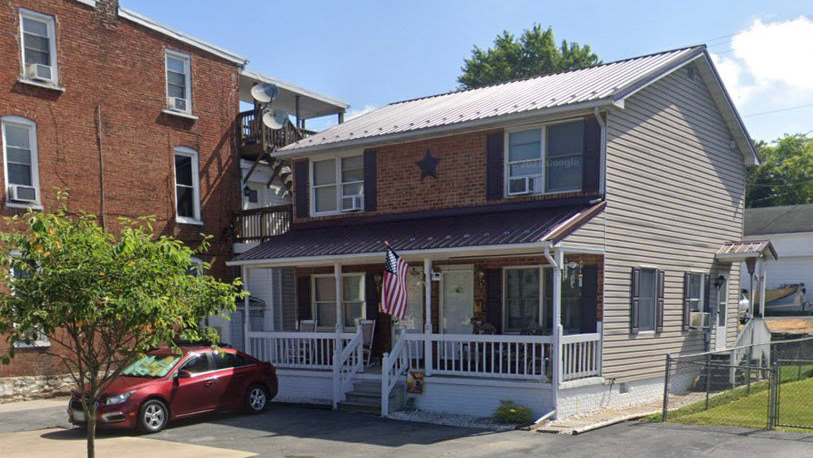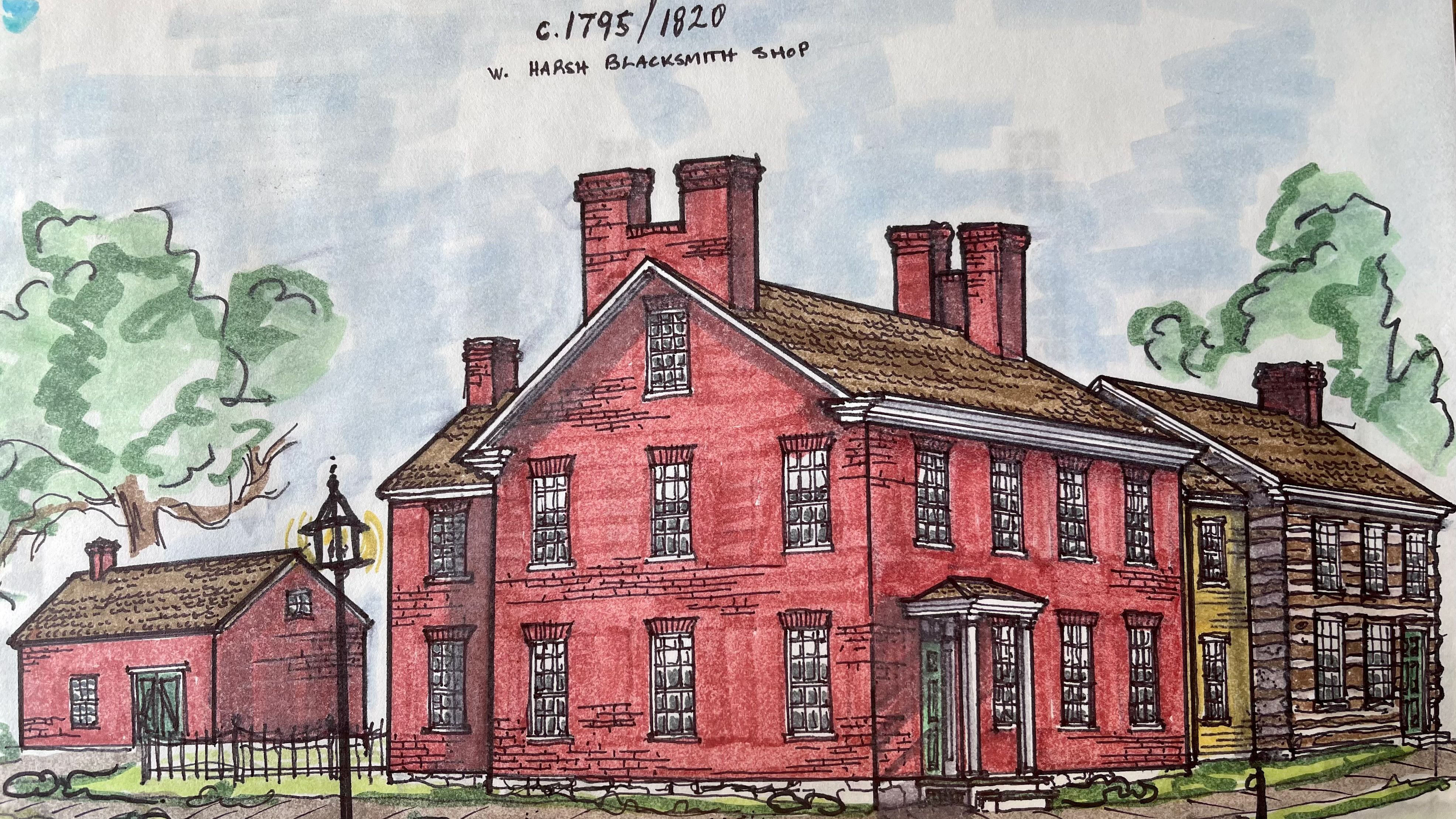The c.1789 Ardinger Log cottage as it would have appeared new. Watercolor by Tom Freeman 2022
A charming storybook log cottage once sat on the western side of South Vermont street, just a few doors south of the intersection with W. Salisbury. The small log home was styled in the Georgian taste, with elements from the Maryland Tidewater region having tall windows and a short door. This building could boast of being one of Williamsport's the earliest homes, built by one of Williamsport's great heroes, Christian Ardinger. Ardinger was a hero of the Revolutionary War and among the very first settlers of newly formed Williamsport. He was also one of its earliest businessmen.
Lot 70 of Otho Holland William's original plot map of Williamsport was first leased to Christian Ardinger (1745-1807) in 1788 for the standard terms. The lease gave Ardinger two years to build a house of log, frame, stone, or brick.
Christian Ardinger was born in Pennsylvania in 1745 somewhere near Shippensburg. He married Anna Maria Stambach in 1771. Christian immediately enlisted to fight for the patriots when the United States declared independence. He was assigned to Rippey's Company in Cumberland County, PA, in 1776. Christian served at least five years as he appeared on rosters in August of 1781. Christian, Anne, and their children moved to Washington County, MD, in the vicinity of Williamsport in about 1782.
The house in 1978.
Ardinger ran Watkin’s Ferry that crossed the Potomac from roughly 1782 until the early 1790’s. Christian's great-grandson Charles Ardinger (1851-1900) would also run it in the last quarter of the 19th century. Christian was listed as a laborer in early records but was also a very early merchant and exporter. He was a contemporary of other early local merchants such as the Wiesel and Humrichouse. By 1788, Ardinger owned six lots so it is unclear if Christian and Anne lived in this small, charming house or whether they sublet as a tenant property.
S. Vermont St. c.1930. The house is on the left.
Charles Ardinger (1851-1900) c.1890 on the Watkin’s/Light’s/Lemen’s Ferry.
Christian Ardinger leased the lot and house to Frederick Dellinger in 1792 for 122 pounds. This large sum proves the lot had significant improvements. Dellinger was a fellow ferryman with Ardinger at Watkin's Ferry, and this relationship is likely how the transaction came to be. The house transferred ownership several times in the following years, including ownership by the Van Lears, then back to the Ardinger Family until it was purchased by Charles Warfield in 1829.
Charles Warfield Jr. (1787-1868) was the youngest son of Dr. Charles Alexander Warfield Sr. Doctor Warfield is most remembered for his role in the seizure and burning of the British ship the "Peggy Stuart" in 1774 in retaliation to taxes imposed on the colonists by the Boston Tea Party.
A famous painting depicting this scene hangs in the Maryland State House. Charles Jr. was an active tradesman dealing in lumber, brick, and iron in Williamsport, operating "at the Old Stand, opposite the taverns of Hollman and Moudy" by 1828. In 1829, Warfield had acquired at least four other lots along south Vermont Street. He also served as Assistant Burgess in 1830 and had a seat on the first board of directors of the newly established Washington County Bank in 1832.
Within months of the canal opening at Williamsport in 1835, Charles Warfield operated one of the five shipping firms running boats on the canal between Williamsport and Georgetown. Charles received approval from the Canal Board of Directors to build a second basin of 20 by 100 feet above Lock 44 on a property he already owned. Just as the Cushwa Basin was to the north, this basin allowed merchant boats to easily maneuver up to his warehouse for loading and unloading goods.
C.1890. The house is the small building to the right of the tree.
In 1836, Charles Warfield gave John Herr a power of attorney for all his interests in Williamsport with specific rules on what prices to sell them for, then he returned to Annapolis. Unfortunately, this business relationship resulted in a lengthy court case between Charles and John Herr's children in 1857. Eventually, in 1864, David Cyster, Trustee for Herr's children, sold lot 70 in its entirety to John Kreps for $375. John Kreps subdivided the property and likely constructed a home on the northern half of lot 70 in 1868. John sold the southern portion where this home resides to Susan Beard for $720. The estate of Susan Beard sold the house to Ida Ardinger for $362.60 in 1900.
The old log cottage again was in the hands of the Ardinger family. The house stayed with Christian and Anna's descendants for the next ¾ of a century when it again left the family in 1973.
The old log cottage again was in the hands of the Ardinger family. The house stayed with Christian and Anna's descendants for the next ¾ of a century when it again left the family in 1973.
19th Century map showing Warfield’s Basin on “Howards Addition to Williamsport”. To the right just north of lock 44.
This basin occupied the land where the parking lot across from lock 44 now sits. A small community of warehouses, residences, and other businesses sprung up around this basin on "Howard's Addition to Williamsport" and became known as "Main Street ." Warfield wanted this basin as he was already purchasing the two most southern warehouse lots on this land. The warehouse would be used "for the receipt and forward of produce." Charles also secured a lease on ground in Georgetown "for the deposit of plaster or other articles, designed as backloading for boats."
Shortly after his basin was completed and his new adjoining 45 by 60-foot warehouse had begun construction, Charles Warfield decided to sell his seven homes, including the six on South Vermont Street. He also sold his under-construction warehouse and a new 24 by 96-foot boat house built to construct and repair boats across the street from the basin.
When the house was surveyed in 1978 and listed on the Washington County Historical Site Survey, it was noted as being in "good condition." This charming old house, one with important history for our town, was demolished in 1983/4 to make way for new construction.
Demolition applications for our historic structures should be vetted carefully before being granted. Irreplaceable history such as this is erased when these storied buildings are destroyed by the wrecking ball. Adaptive reuse, restoration, or saving facades should be considered first.
Saving Williamsport's history is now more critical than ever as we begin our renaissance. One must ask themselves, what kind of town do we want to live in? To attract businesses, tourists, and responsible property owners, we must respect and restore what is here. Williamsport's log, brick, and stone history is important and should be preserved and protected.
